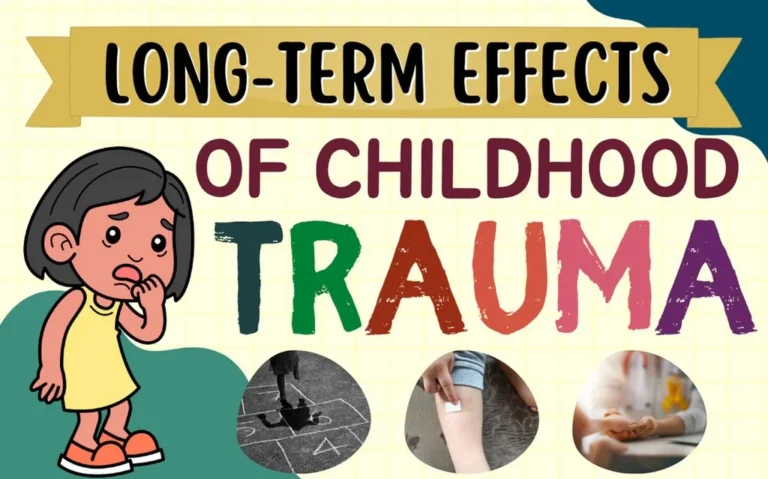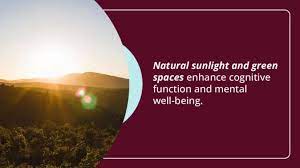
In our increasingly urbanized world, access to green spaces has become more crucial than ever for maintaining mental health and overall well-being. Research consistently shows that spending time in parks, gardens, and natural environments can significantly reduce stress, anxiety, and depression while boosting mood and cognitive function. This comprehensive guide explores the powerful connection between nature and mental health, offering practical ways to harness these benefits in daily life.
What Are Green Spaces and Why Do They Matter?
Green spaces encompass any area dominated by vegetation, including urban parks, community gardens, forests, botanical gardens, tree-lined streets, and even indoor plants. These environments provide essential contact with nature in our daily lives, serving as vital resources for physical activity, social interaction, and mental restoration.
Types of Green Spaces:
- Public parks and recreational areas
- Community gardens and allotments
- Urban forests and nature reserves
- Botanical gardens and arboretums
- Green corridors and tree-lined pathways
- Rooftop gardens and vertical greenery
- School and workplace outdoor spaces
- Private gardens and courtyards
Accessibility and Equity: Access to quality green spaces varies significantly across communities, with lower-income neighborhoods often having fewer and smaller green areas. This disparity creates environmental justice concerns, as those who might benefit most from nature’s mental health effects often have the least access.
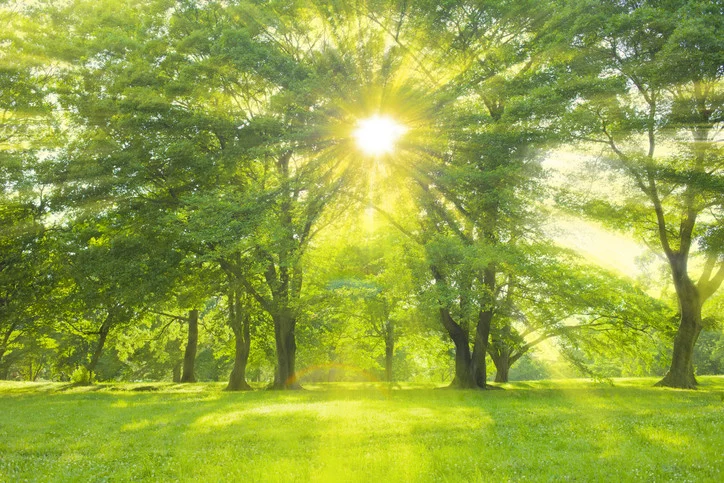
Scientific Evidence for Mental Health Benefits
Extensive research demonstrates the positive impact of green spaces on psychological well-being:
Stress Reduction: Studies show that even brief exposure to natural environments can lower cortisol levels, reduce blood pressure, and decrease heart rate. The stress-reducing effects of nature are measurable within minutes of exposure and can last for hours afterward.
Mood Enhancement: Regular access to green spaces is associated with reduced symptoms of depression and anxiety. A landmark study found that people living within 300 meters of green space reported better mental health and were less likely to experience psychological distress.
Cognitive Benefits: Nature exposure improves attention, concentration, and cognitive performance. The “Attention Restoration Theory” suggests that natural environments help restore directed attention capacity, reducing mental fatigue and improving focus.
Sleep Quality: People with access to green spaces report better sleep quality and duration. Natural light exposure and physical activity in green environments help regulate circadian rhythms and promote healthy sleep patterns.
Mechanisms Behind Nature’s Mental Health Effects
Several biological and psychological processes explain how green spaces improve mental well-being:
Neurobiological Responses:
- Reduced activity in the brain’s prefrontal cortex, associated with rumination and negative thinking
- Increased production of mood-regulating neurotransmitters like serotonin and dopamine
- Enhanced parasympathetic nervous system activity, promoting relaxation
- Improved immune function through exposure to beneficial microorganisms in soil and plants
Psychological Mechanisms:
- Restoration of cognitive resources through “soft fascination” with natural elements
- Reduced rumination and negative thought patterns
- Enhanced sense of connectedness and meaning
- Improved self-esteem and mood through physical activity in nature
Social Benefits:
- Increased opportunities for social interaction and community building
- Shared positive experiences that strengthen social bonds
- Reduced social isolation through community gardening and outdoor activities
- Enhanced sense of belonging and place attachment
Mental Health Conditions That Benefit from Green Spaces
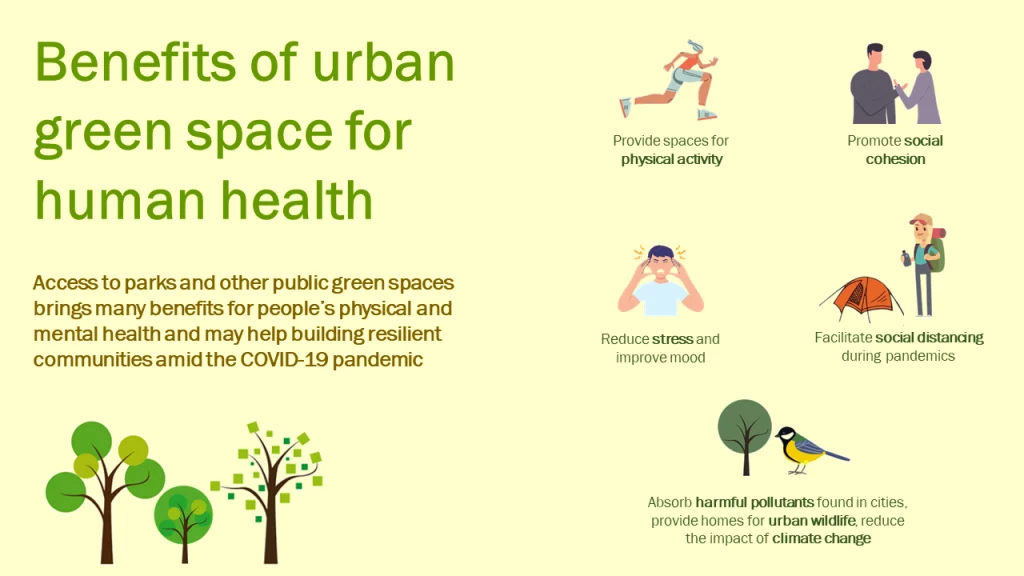
Research shows particular benefits for various mental health conditions:
Anxiety Disorders: Natural environments provide calming sensory experiences that help regulate the nervous system and reduce anxiety symptoms. The repetitive sounds of nature, such as rustling leaves or flowing water, can be particularly soothing.
Depression: Regular exposure to green spaces can reduce depressive symptoms through multiple pathways: increased physical activity, enhanced social connections, improved self-esteem, and exposure to natural light that helps regulate mood.
ADHD and Attention Difficulties: Children and adults with ADHD show improved attention and reduced hyperactivity after spending time in natural settings. Green environments provide gentle stimulation that helps restore attention without overwhelming the nervous system.
Stress-Related Disorders: Nature’s stress-reducing effects make green spaces particularly beneficial for people experiencing chronic stress, burnout, or trauma-related conditions. Natural environments activate the body’s relaxation response and provide psychological refuge.
Barriers to Accessing Green Spaces
Understanding obstacles helps address inequitable access to nature’s mental health benefits:
Geographic Barriers:
- Urban environments with limited green infrastructure
- Rural areas lacking maintained public spaces
- Transportation difficulties reaching natural areas
- Distance from home or workplace to quality green spaces
Socioeconomic Factors:
- Cost of accessing private gardens or nature-based activities
- Time constraints due to work schedules or caregiving responsibilities
- Lack of safe, well-maintained green spaces in low-income neighborhoods
- Limited resources for transportation to natural areas
Personal and Cultural Barriers:
- Safety concerns in certain outdoor spaces
- Cultural attitudes toward nature and outdoor activities
- Physical disabilities limiting access to traditional green spaces
- Language barriers affecting awareness of available resources
Creating and Maximizing Green Space Benefits
Practical strategies can help individuals and communities harness nature’s mental health benefits:
Individual Strategies:
- Schedule regular “nature breaks” during the workday
- Create indoor green spaces with houseplants and natural elements
- Practice mindful observation of natural surroundings
- Engage in gardening, even in small spaces like balconies or windowsills
- Take walking meetings in parks or tree-lined areas
Workplace Initiatives:
- Incorporate plants and natural elements into office design
- Create outdoor meeting spaces and break areas
- Organize team-building activities in natural settings
- Support employee participation in community gardening projects
- Implement “walking meetings” and outdoor brainstorming sessions
Community Development:
- Advocate for more parks and green infrastructure in neighborhoods
- Support community gardens and urban farming initiatives
- Participate in tree-planting and beautification projects
- Promote green building standards and sustainable development
- Create pocket parks and green corridors in dense urban areas
Home-Based Solutions and Indoor Alternatives
When outdoor green spaces aren’t accessible, indoor alternatives can provide mental health benefits:
Indoor Gardening:
- Houseplants can improve air quality and provide psychological benefits
- Herb gardens on windowsills offer sensory stimulation and purpose
- Terrariums and small garden ecosystems create miniature natural environments
- Vertical gardens maximize green space in small areas
Nature-Inspired Design:
- Natural lighting and views of outdoor greenery
- Nature sounds and aromatherapy with plant-based scents
- Natural materials like wood and stone in home decor
- Nature photography and artwork depicting landscapes
Virtual Nature Experiences:
- Nature documentaries and virtual reality nature experiences
- Meditation apps featuring natural soundscapes
- Online gardening communities and plant care resources
- Digital detox periods combined with any available outdoor time
Therapeutic Applications and Nature-Based Interventions
Mental health professionals increasingly incorporate nature into treatment approaches:
Ecotherapy and Nature Therapy:
- Structured outdoor activities as part of mental health treatment
- Wilderness therapy programs for adolescents and young adults
- Horticultural therapy using gardening for therapeutic purposes
- Animal-assisted therapy in natural settings
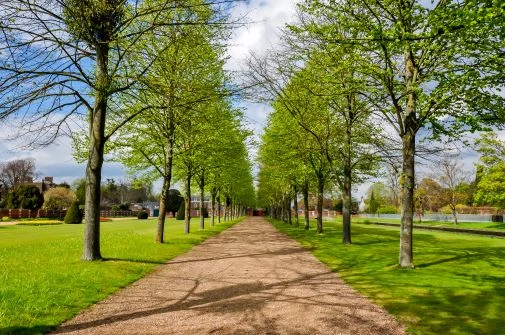
Forest Bathing (Shinrin-yoku):
- Mindful, immersive experiences in forest environments
- Guided practices focusing on sensory awareness in nature
- Group forest bathing sessions for social connection and healing
- Integration with mindfulness and meditation practices
Adventure Therapy:
- Outdoor challenges that build confidence and resilience
- Team-building activities in natural environments
- Physical activities that combine exercise with nature exposure
- Wilderness expeditions for personal growth and healing
Community and Policy Implications
Improving access to green spaces requires coordinated community and policy efforts:
Urban Planning:
- Integrating green infrastructure into city development plans
- Ensuring equitable distribution of parks across neighborhoods
- Creating green corridors connecting natural areas
- Implementing green building standards and requirements
Public Health Initiatives:
- “Park prescriptions” where healthcare providers recommend nature time
- Community programs promoting outdoor physical activity
- Mental health awareness campaigns highlighting nature’s benefits
- Research funding for green space and mental health studies
Environmental Justice:
- Addressing disparities in green space access across communities
- Prioritizing green infrastructure in underserved neighborhoods
- Community-led initiatives for local green space development
- Policy advocacy for environmental health equity
Frequently Asked Questions

Q: How much time in nature do I need to see mental health benefits?
A: Research shows benefits can begin with as little as 5-10 minutes of nature exposure. However, spending at least 120 minutes per week in nature is associated with significant health and well-being benefits. The key is consistency rather than duration.
Q: Do indoor plants provide the same mental health benefits as outdoor green spaces?
A: While indoor plants offer some benefits like improved air quality and stress reduction, they don’t provide the full range of benefits associated with outdoor green spaces. However, they’re valuable alternatives when outdoor access is limited and can complement outdoor nature experiences.
Q: Can green spaces help with seasonal depression (SAD)?
A: Yes, green spaces can help with seasonal affective disorder by providing natural light exposure and opportunities for physical activity. Even winter activities in green spaces, when combined with appropriate light therapy, can help manage SAD symptoms.
Q: Are some types of green spaces better for mental health than others?
A: Different green spaces offer various benefits. Water features tend to be particularly calming, while diverse natural environments with trees, flowers, and wildlife provide richer sensory experiences. The “best” green space is one that’s accessible, safe, and personally appealing to the individual.
Q: How can I advocate for more green spaces in my community?
A: Start by attending local government meetings, joining community organizations, and connecting with like-minded neighbors. Document the need for green spaces, research successful examples from other communities, and propose specific solutions. Consider partnering with local health organizations to emphasize mental health benefits.
Q: Can virtual nature experiences replace real outdoor time?
A: While virtual nature experiences can provide some benefits, especially when real nature isn’t accessible, they cannot fully replace the multisensory, physical experience of being outdoors. Virtual experiences work best as supplements to, rather than replacements for, real nature contact.
Conclusion
The connection between green spaces and mental health is both scientifically proven and intuitively understood. Access to parks, gardens, and natural environments provides powerful, accessible tools for improving psychological well-being, reducing stress, and enhancing overall quality of life.
As we continue to urbanize and face increasing mental health challenges, prioritizing green spaces becomes not just an environmental issue, but a critical public health imperative. Whether through individual actions like tending houseplants, community efforts to create neighborhood gardens, or policy advocacy for equitable green infrastructure, everyone can contribute to expanding access to nature’s mental health benefits.
The evidence is clear: green spaces are not luxury amenities but essential components of healthy communities. By recognizing and acting on this connection, we can create environments that support both individual well-being and collective mental health, fostering resilient communities where everyone has access to nature’s healing power.
Making time for nature, advocating for green spaces in our communities, and recognizing the vital role of the natural environment in mental health can transform both individual lives and entire communities. The path to better mental health may be as simple as a walk in the park – if we ensure those parks exist and remain accessible to all.


